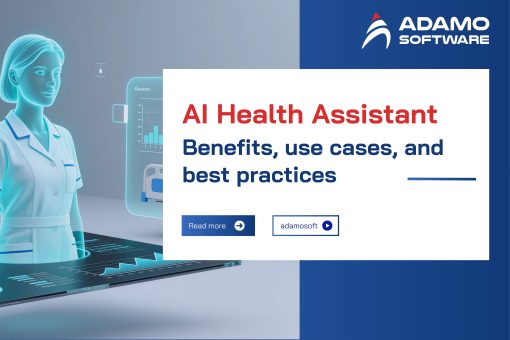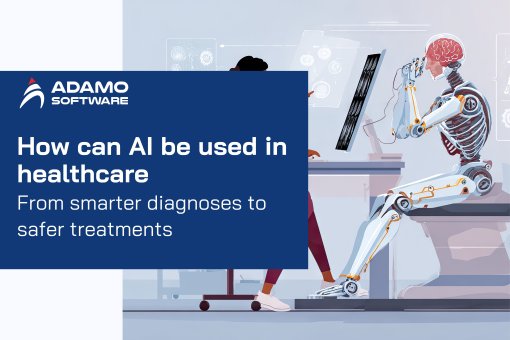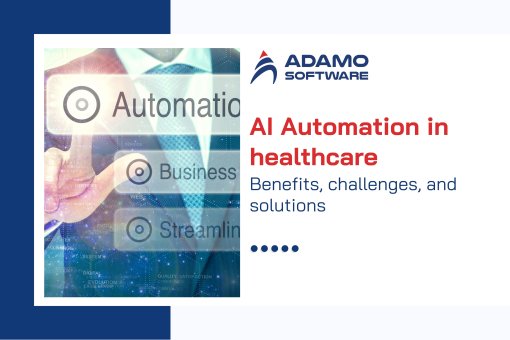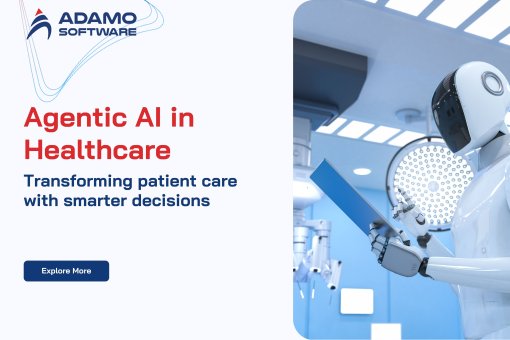Contactless patient check-in systems: Streamline patient journey
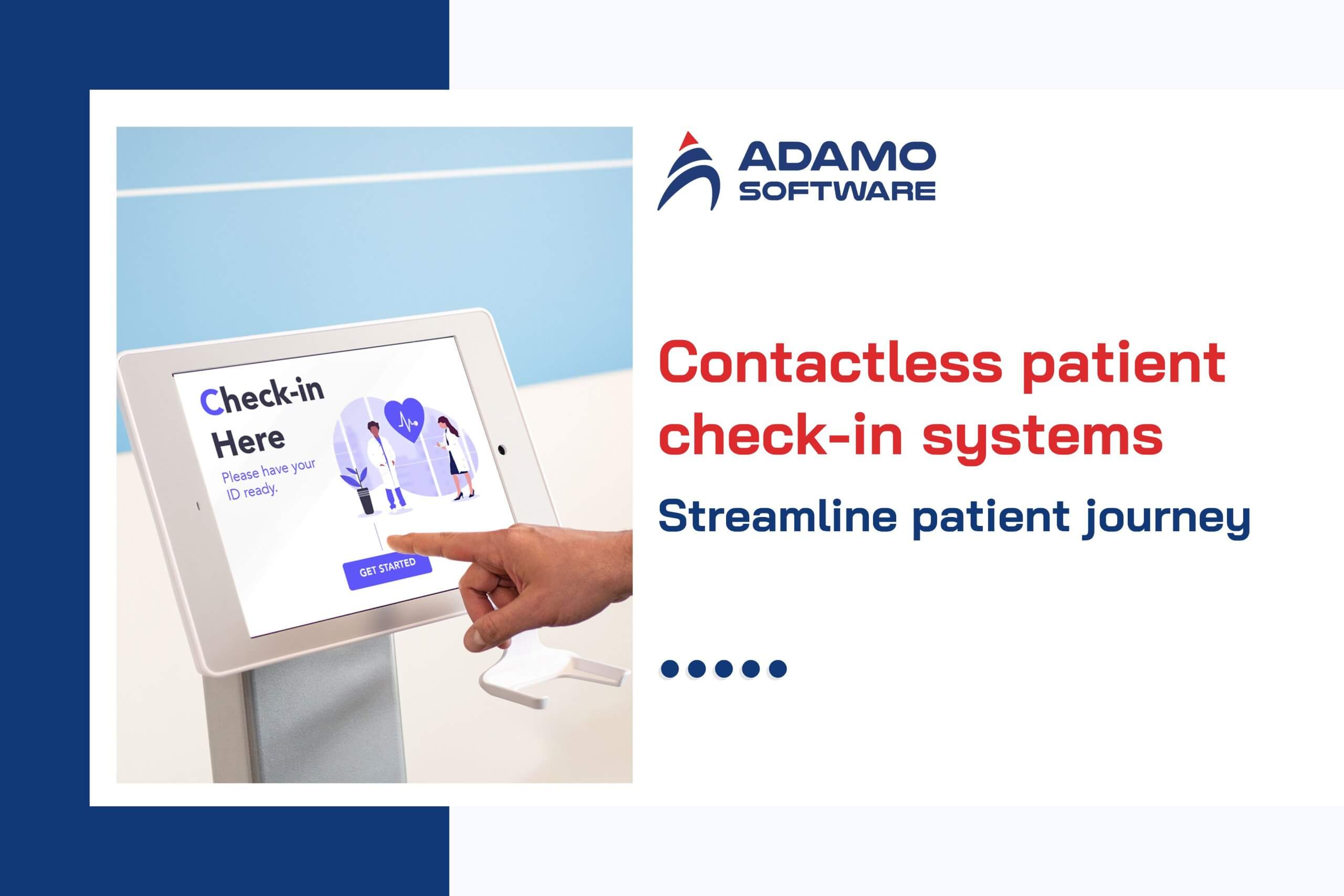
Explore the rise of contactless patient check-in systems in healthcare. Learn key benefits and step-by-step instructions for implementing them effectively.
Over the past decade, contactless care has become increasingly prominent in healthcare. The impact of the COVID-19 pandemic has accelerated the adoption of contactless technology across most consumer-facing industries. Potential patients, in particular, are increasingly expecting to access and manage their healthcare through more convenient, contactless means.
In addition, many healthcare providers recognize the benefits of contactless care. For example, clinics are increasingly looking to build a long-term virtual care strategy to support patient visits in and out of the office. So, implementing contactless patient check-in systems is a critical step toward success.
This article outlines contactless patient check-in systems, their key benefits in healthcare, and how to implement them. If you’re looking for more advanced strategy guidance for implementing contactless patient check-in systems, check out this step-by-step guide to successful implementation.
I. The emergence of contactless patient check-in systems
With the rapid spread of COVID-19, the healthcare industry has required advancements and developments to combat the spread. This has prompted professionals to adopt technologies that prioritize safety and efficiency. Among these innovations, the introduction of automated check-in systems is a significant development. It allows patients to schedule appointments and complete forms remotely before arriving for their appointments. This shift also represents a long-term shift towards a patient-centric approach to healthcare, not just a temporary response to the pandemic.
Contactless patient check-in systems enhance the patient experience by reducing wait times and streamlining the admission process. With them, patients can update their information and complete necessary forms using their devices from the comfort of their homes. This eliminates the need for traditional waiting areas, paper handling, and in-person confirmations.
As a result, patients arrive better prepared for their appointments, and healthcare professionals can manage traffic flows more efficiently. This translates into shorter wait times and smoother overall experience.
In addition to improving the efficiency of the registration process, these systems also strongly emphasize patient safety, which is a key concern in the post-pandemic era. They help reduce crowding in waiting areas and minimize the use of shared touchscreens and paper forms.
As a result, the risk of transmitting the virus is reduced. It is, therefore, not surprising that patients appreciate the convenience of managing their registration remotely or with minimal contact. This increases their sense of security and confidence in their healthcare experience.
Furthermore, contactless patient check-in systems increase accuracy and compliance, streamlining the admissions process. Ensuring all necessary information is entered in advance reduces the likelihood of errors and omissions. Additionally, it allows healthcare providers to access accurate and timely data, allowing them to deliver more effective treatment. This also reduces the administrative burden on staff, allowing them to focus more on patient care and reducing the risk of burnout.
The growing adoption of automated patient registration systems reflects the trend toward modernizing healthcare and empowering patients to take control of their healthcare journey.
As technology reshapes the industry, tools like patient admission software and automated processes can address current needs. In particular, it prepares healthcare systems to adapt to future challenges in an agile and resilient manner. This shift underscores the commitment to creating a more efficient, patient-centered, safer healthcare environment.
You can read more about Telemedicine App Development Solutions: Key steps to develop here.
II. How Contactless Check-In Solutions Impact Patient Safety and Convenience in Hospitals
In the changing and evolving world of healthcare, the patient experience has become increasingly important, especially with the COVID-19 pandemic. One such evolution is the frictionless check-in process, which improves patient safety and convenience. Administrators, owners, and IT managers in the United States need to understand the impact of this change.
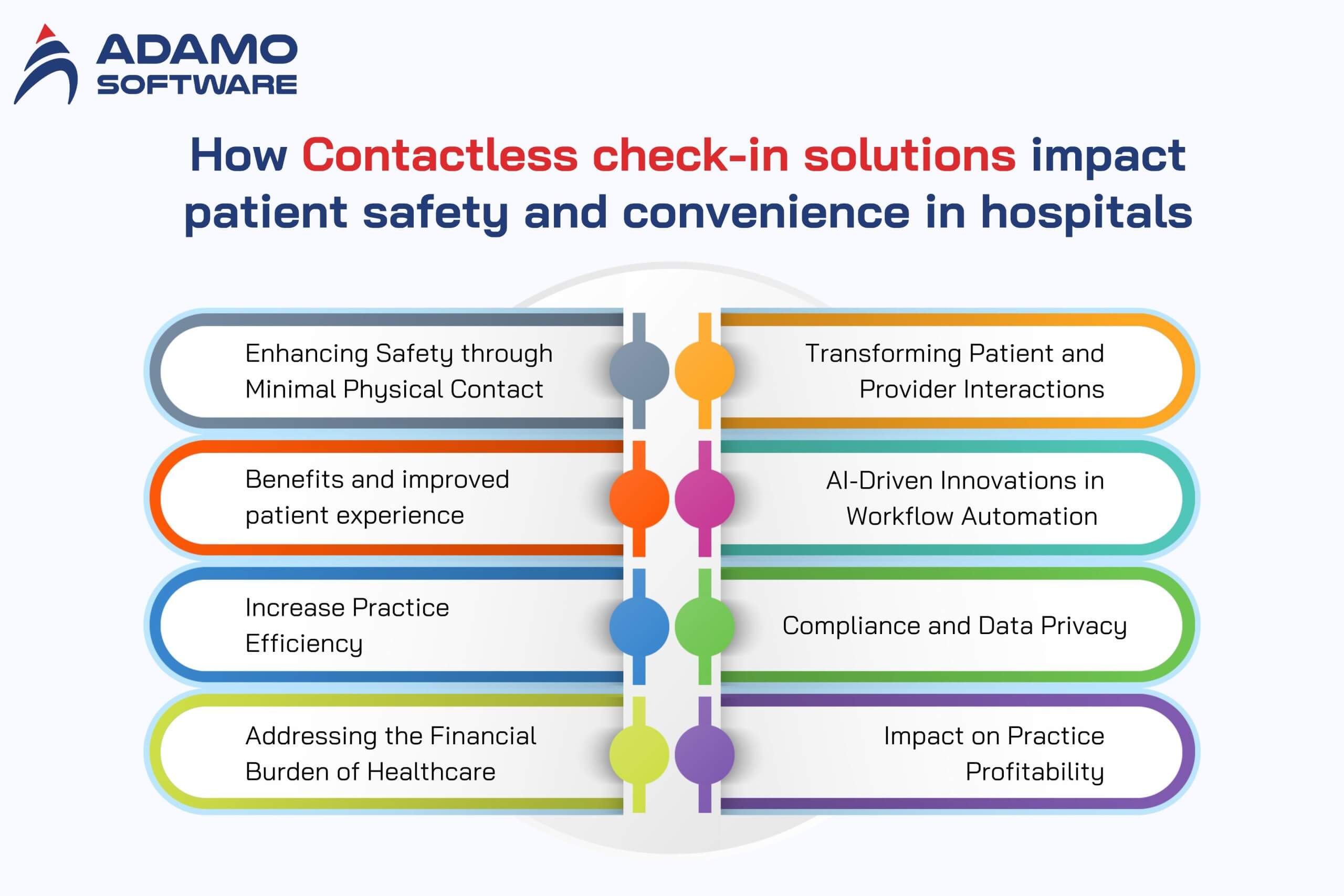
1. Enhancing Safety through Minimal Physical Contact
Contactless patient check-in systems have been recognized as meaningful because they reduce physical interaction, which is critical to preventing the spread of infectious diseases. Healthcare facilities have developed technologies that allow customers to check in without direct contact with staff. This approach reduces touchpoints and compresses manual guidelines from the Centers for Disease Control and Prevention (CDC) to ensure patient and provider safety.
A study conducted during the pandemic found that approximately 16.5 million Americans accessed telehealth for the first time. This has been made available for increased use of digital solutions. Many healthcare providers have initiated their virtual care and contactless patient check-in systems to prioritize patient safety, giving patients confidence that their healthcare facilities are working to minimize risk.
2. Benefits and improved patient experience
Surveys have found that 92% of patients prefer to complete a pre-visit form online rather than in person, demonstrating a clear need for a smoother experience. Contactless patient check-in systems continue to use technology to streamline the registration process. Patients can complete the necessary forms at home or in their vehicles, significantly reducing wait times and room congestion.
Studies show that these digital solutions can shorten registration times for new patients from 25 minutes to just five to seven minutes and even two minutes for patients who have seen them before and have a medical record. Practice managers can improve operational efficiency by taking it slow, improving the patient experience while reducing the workload of practice staff.
Many practices have reported increased patient satisfaction. Dr. Glass from South Georgia Primary Care reported a significant reduction in registration times after implementing contactless solutions. Feedback from many organizations reflects a widespread appreciation for the modern patient experience.
3. Increase Practice Efficiency
Using contactless patient check-in systems has made key operational tasks more efficient, allowing healthcare providers to utilize staff resources better. In-person check-in methods often result in long wait times, excessive paperwork, and red tape. Automating these processes allows front desk staff to focus on more important tasks that impact patient care.
For example, many facilities are now using automated service kiosks. A study involving more than 28,000 patient visits found that kiosk technology reduced the average check-in time from 40 minutes to 15 minutes. This efficiency improves patient retention and increases daily profits for healthcare practices.
Additionally, automated appointment management systems allow patients to manage their schedules better, requesting, rescheduling, and receiving reminders without using staff hours. Not only does this improve patient satisfaction, but it also helps reduce no-show rates, which is critical to maximizing a clinic’s bottom line.
4. Addressing the Financial Burden of Healthcare
Rising healthcare costs make treatments more affordable for many patients today. Research finds that nearly one-third of Americans skip necessary medical care due to cost concerns. Stress-free check-in solutions provide financial transparency, allowing patients to see their obligations, such as co-pays and deductibles. This is important for clinics looking to build trust with their patients.
Active payment options integrated into the walk-in check-out process allow staff to set up reimbursement plans that fit the patient’s financial situation, resulting in better collection rates. Reports indicate that practices can increase collection rates by 5% to 10% and increase revenue by 10% to 20% per visit. These financial benefits illustrate the role of walk-in check-out in improving the patient experience and practice profitability.
5. Transforming Patient and Provider Interactions
The shift to contactless patient management reflects a broader trend in healthcare consumerism as patients become more proactive and seek provider clarity. Approximately 75% of consumers want clearer pricing information, and using technology that provides a better understanding of hidden costs helps create an environment for informed decision-making.
With more than 75% of healthcare providers considering a virtual care strategy important, it is clear that technology and patient care are becoming essential. Integrating telehealth services into routine patient care can fill important gaps and significantly improve workflow. Advanced telehealth systems often work with contactless patient check-in systems to provide secure, comprehensive care.
6. AI-Driven Innovations in Workflow Automation
The use of artificial intelligence (AI) in healthcare workflows is improving operational efficiency. AI tools can analyze patient demographics, health history, and preferences to provide personalized services during check-in. This tailored, intelligent approach allows healthcare providers to meet patients’ needs better.
Furthermore, AI can streamline administrative tasks such as completing insurance verification, completing intake forms, and tracking patient data in electronic health records. Automating these functions allows healthcare workers to focus on patient interactions and care, reducing burnout and improving accuracy and job satisfaction. Dr. Morgan noted that technologies like AI can optimize workflows and help healthcare providers meet changing patient needs.
AI also plays a central role in contactless patient check-in systems using machine learning to predict patient flow. This helps clinics better manage resources. By analyzing past appointment data and no-show rates, clinics can identify peak times and adjust staffing, accordingly, ensuring a smoother experience for patients and providers.
7. Compliance and Data Privacy
The rise of digital interactions raises concerns about data security and compliance with regulations like the Health Insurance Portability and Accountability Act (HIPAA). Implementing contactless patient check-in systems must prioritize patient protection with secure processes for handling sensitive information.
Advanced encryption methods in digital patient check-in can help keep data secure throughout the check-in process. When patients use contactless patient check-in systems, they can be confident that their personal information is managed according to strict security standards.
Healthcare facilities that adopt these technologies improve the patient experience and demonstrate a commitment to protecting sensitive health information. This can foster absolute patient trust and strengthen their reputation in the community.
8. Impact on Practice Profitability
As healthcare organizations across the United States strive to improve operational efficiency while ensuring patient safety and convenience, the financial impact of contactless patient check-in systems becomes clear. The cost savings from streamlining administrative tasks can be significant.
For example, digital check-in can save an estimated $3 per transaction compared to traditional manual methods. Automating check-in processes reduces staffing costs while maximizing revenue opportunities, making contactless check-in an economically advantageous option.
The success of these systems is reflected in improved patient satisfaction scores and more completed feedback surveys. Patients appreciate the ease of the online check-in process, and their input provides valuable feedback for continuous improvement.
In short, contactless patient check-in systems enhance patient safety and convenience while promoting financial stability and operational efficiency in healthcare facilities. By investing in these technologies, practice managers, owners, and IT managers can better position their organizations for success in the changing healthcare marketplace.
III. Step-by-step guide for implementing Contactless patient check-in systems
Healthcare professionals or service providers looking to implement registration solutions should take a strategic approach to ensure seamless integration. It is scalable and has a high return on investment (ROI). However, a well-implemented system improves operational efficiency and increases patient satisfaction and staff productivity.
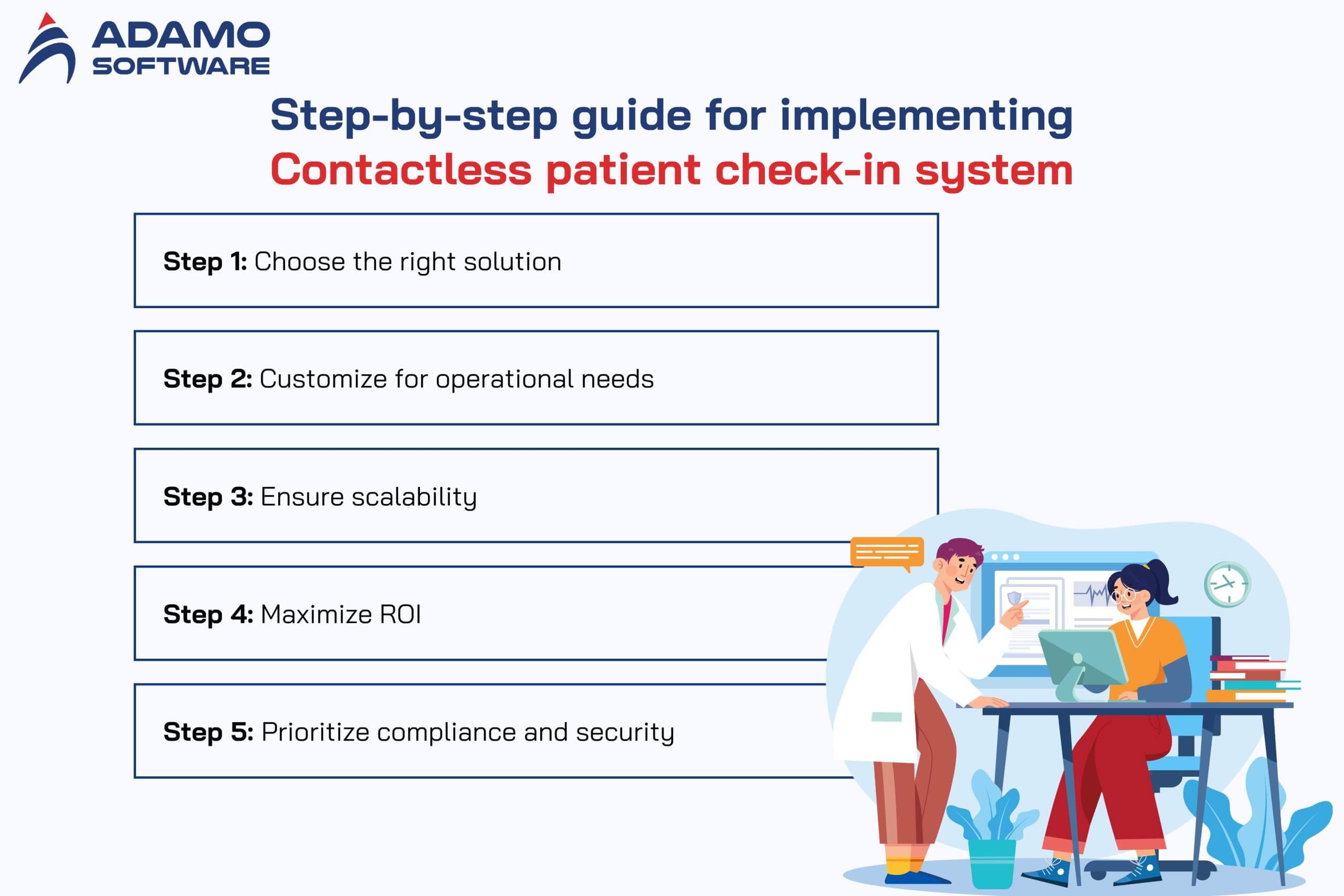
Step 1: Choose the Right Solution
The first important step is to choose a registration solution with an intuitive onboarding and setup process. This allows staff and patients to adapt to the system quickly. Additionally, a system with user-friendly features can help minimize the learning curve, reduce the burden of staff training, and encourage team members to adopt new technology. Therefore, a smooth onboarding process ensures the system becomes an asset, not a disruption.
Step 2: Customize for Operational Needs
Once you have selected the right system, it is important to tailor it to meet your organization’s specific operational requirements. This includes configuring features for registration, appointment scheduling, and seamless integration with existing electronic health record (EHR) systems. By integrating data seamlessly, information flows are consistent across platforms while eliminating the need for redundant data entry. Therefore, automating these processes allows healthcare organizations to reduce administrative workloads and allow staff to focus more on direct patient care.
Step 3: Ensure Scalability
Another important factor in successfully implementing registration systems is scalability. As patient needs change, for example, the system must be able to accommodate increased or decreased volumes without compromising performance. Cloud platforms are often the preferred choice. This is because they provide the flexibility to scale up or down as the facility needs. This adaptability allows healthcare providers to optimize capacity without significant additional investment.
Step 4: Maximize ROI
The next step is to maximize ROI. ROI is an important factor to consider when implementing registration solutions. Many systems have proven to deliver impressive returns. Up to 20 times the initial investment, by improving efficiency, speeding up patient processing, and reducing operating costs. To maximize these benefits, you should regularly monitor performance metrics such as time saved per appointment, reduced wait times, and patient satisfaction.
Additionally, analyzing these metrics helps your organization measure the impact of your system and make informed decisions to ensure continued success.
Step 5: Prioritize Compliance and Security
The final step is compliance with regulations and security. In healthcare, you need to comply with important regulations such as HIPAA. Therefore, any check-in system must meet strict security requirements because it is essential to protect patient information and maintain their trust. This includes data encryption and secure access protocols. Ensuring compliance also helps healthcare providers protect sensitive information, maintain their reputation, and build long-term patient trust.
IV. Why choose Adamo Software for digital patient check-in development
When it comes to developing a digital patient registration system, Adamo Software is the trusted partner you can trust. With extensive experience in healthcare software development, Adamo specializes in creating tailored solutions that enhance the patient experience and streamline healthcare operations.
Our ability to seamlessly integrate new digital registration solutions with existing healthcare systems sets Adamo apart. Additionally, we maintain the highest data security and compliance standards, ensuring patient information is always protected. To find which digital patient check-in system will be best for your practice, schedule a demo with Adamo today!
FAQs
1. Which patient check-in systems are scalable for growing health networks?
The most scalable check-in systems include Phreesia, Curogram, Clearwave, AdvancedMD, DrChrono, and Tebra. These platforms support multi-clinic networks with features like digital intake, mobile and kiosk check-in, insurance verification, EHR/PMS integration, and real-time data syncing. They’re built to handle high patient volumes, multiple locations, and customizable workflows—making them ideal for expanding health organizations.
| System / Vendor | Strengths for Scale / Large Networks |
|---|---|
| Phreesia | Designed for large hospitals and multi-specialty groups; robust rules-based engine for insurance verification, eligibility check & payment processing at check-in. |
| Curogram | Not just check-in — full patient-engagement and communication platform (digital intake, scheduling, reminders, telemedicine) — good for networks wanting uniform workflows across clinics. |
| Clearwave | Offers kiosks, mobile and tablet-based check-in, eligibility verification, scheduling, payments, and claims to support high volumes and multiple patient flows. |
| AdvancedMD | Cloud-based suite with customizable intake forms, supports both kiosk and staff-driven workflows — helpful in high-volume clinics. |
| DrChrono | Mobile-first (iPad/iPhone) check-in + EHR + practice management; good for mobile-heavy workflows or decentralized clinics. |
| Tebra (formerly Kareo + PatientPop) | Combines digital registration/check-in, scheduling, billing — ideal for medium-sized multi-site practices or growing private clinic networks. |
2. Why are patient care policies important when adopting contactless check-in technologies?
Patient care policies ensure that contactless check-in remains safe, consistent, and patient-centered. They clarify how data is collected, how staff should assist different patient groups, how privacy is protected, and how issues (like accessibility or tech failures) are handled. Without clear policies, contactless check-in can create confusion, compliance risks, and gaps in patient experience.
3. What are impact of contactless technology in medical software solutions on patient experience?
Contactless technologies improve patient experience by offering faster check-ins, reduced waiting times, safer interactions, and better infection control. They also enhance privacy, convenience, and accessibility through mobile forms, digital consent, and automated reminders. Overall, patients experience smoother, more efficient, and less stressful care journeys.
4. Are there appointment management systems that support contactless patient check-ins?
Yes — there are a number of appointment-management / patient-intake systems that explicitly support contactless check-ins (online scheduling, pre-arrival registration, mobile/kiosk check-in, digital forms) rather than just traditional front-desk workflows:
| System / Vendor | Contactless check-in support | Key strengths & features | Best for / Notes |
|---|---|---|---|
| Phreesia | Mobile + online self-scheduling & check-in; in-office kiosks/tablets also supported. | Online scheduling, pre-visit registration, insurance verification, digital intake, automated reminders, EHR/PM integration, payment processing. | Large clinics or health networks needing a full-featured, scalable intake + scheduling + billing system |
| Clearwave | Mobile, tablet, kiosk and pre-registration workflows — fully patient-led check-in. | Pre-registration, custom clinical intake forms, real-time data flow into EHR/PM, payment collection at check-in, reduced staff workload. | Practices that require self-service check-in options (kiosk/tablet/mobile) and want to streamline front-desk operations |
| Curogram | Contactless check-in supported: patients complete registration, forms and payments before arrival on their own device. | Online scheduling, digital intake/registration, telehealth support, appointment reminders & confirmations, patient communication tools. | Clinics or networks seeking a patient-centric, communication-focused appointment + intake platform with contactless convenience |
| CERTIFY Health | Mobile + tablet + kiosk check-in; supports face recognition & digital consent for secure, contactless check-in. | Face-based identity verification, digital check-in & consent forms, insurance/ID verification, integrated workflow with RCM/EHR, support for high-volume environments. | Hospitals or large clinics that need high security, identity verification and handle many daily check-ins |
| Qminder | Remote/online pre-sign-in + in-clinic kiosk self check-in. | Appointment scheduling + queue management, remote sign-in, kiosk check-in, service dashboard, calendar/EMR integration, analytics and queue visibility. | Clinics or service centers needing flexible scheduling + queue management (walk-ins + appointments), multi-location support, and remote check-in |







